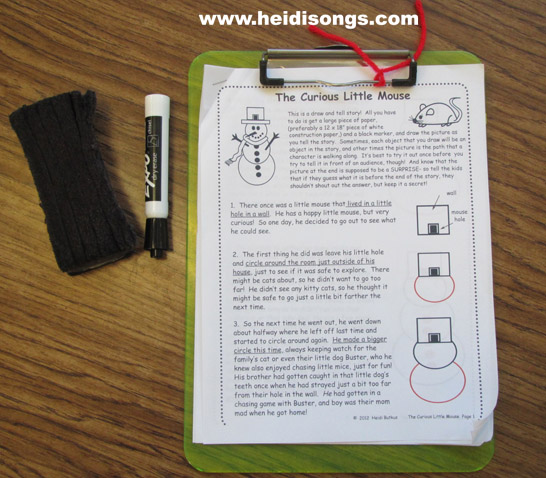Dealing with Defiance in the Classroom
Defiance, disrespectfulness, kids yelling “NO!” – this is what a teacher’s classroom management nightmares are made of! These days, most teachers may have had one or two defiant children in their class at some point, even all the way down to primary levels like Kindergarten, first, or second grade. So what do you do if a child yells, “NO!” right in your face? How do you handle if a child simply ignores your instructions or disrespects you, right in front of the whole class, even on the very first day of school?
Have you heard the news? We've Moved to HeidiSongs.tv!
Our new website features an online video streaming service, updated blog posts at Heidisongs.blog, and a wealth of fresh resources designed to make learning even more fun and engaging.
You can also continue shopping for our educational products there and at our Teachers Pay Teachers store!
Head over to HeidiSongs.tv now and explore all the exciting new features.See you there!
__________________________________________________________________________
Issues like this MUST be handled immediately and handled well, but I’ve never heard of a university teacher prep course addressing it. I think that every educator knows that there is much more going on emotionally with a child who is expressing their frustration in this way. But until you can get to the bottom of it, what should you do?
Let me start by reiterating that I am NOT a child psychologist! I am just going to explain what has worked (and has not worked!) for me after 27 years as a classroom teacher. I’m sure that there are many more great solutions out there than I know of, and I would love to hear them! I do thank the dear Lord in heaven that I did not have any truly defiant (screaming NO in my face, yelling at me, ignoring my instructions, or just plain saying “no” to whatever I asked) until after I had been teaching for about 15 years. I did have kids who would refuse to go to time out from time to time, and you can read about how I handled that in this blog post here. But those kids weren’t regularly defiant about classwork and routine things, so in my mind at least, I categorize them a bit differently- especially once I experienced the more severe kind!
So here are my suggestions. I would love to hear your thoughts on the matter as well! Be sure to leave your comments below. Keep in mind that I am writing from the point of view of a primary teacher; my experience is in TK, Kindergarten, first, and second grade.

(And please note, this has NOTHING at all to do with my current class of wonderful TK students! I wrote this quite some time ago, and decided to wait to publish it until the students that helped me learn these tips were looooong gone, just to be on the safe side!)
Relationships Come First
It’s incredibly important to build good relationships with both students and parents at the beginning of the year! I try very hard to look each child in the eye and greet him or her at the door with a smile, every single day! For me, the key has ALWAYS been singing with the little ones, because they ALWAYS love it! But however you build a relationship with your students, make that a top priority at the beginning of the school year. I find that a child who falls in love with his or her teacher will usually do as he or she is asked!
As far as parents are concerned, try very hard to find time to make some positive contact with parents BEFORE anything goes wrong! Parents need to know that you genuinely like and care for their child as if he were your own. I think that once they see that you care about their child, they will be more open to your suggestions and trust you if you say there is a problem.
Keep Calm
Children need the adults to manage their emotions calmly when their own are out of control. So be careful not to start yelling right back at a child who is screaming at you! This can also be frightening to the other children in the class, especially in the younger grades, so be mindful of how your behavior could be affecting the other children. Stay calm and remember that the winner is not the one with the loudest voice. It’s not over until it’s over, and it might not be over until the end of the week.
I learned to tell my students, “I can’t listen when people are yelling. It hurts my ears. Please use an inside voice, or go sit down in the ____ until you are ready to do so.” Repeat this like a broken record until the child does what you ask.
Depending on what your school policies are, you can call for administrative or counselor help, or arrange with a partner teacher to trade children when you’ve reached a breaking point. Some children may respond well to a “safe spot” where they can go to calm down and take a break for a while, with the understanding that when they are calm, they will discuss their behavior with you later. One year, one of my kids made his own safe spot and would hide under the computer table until he was calm again.
Meet with Parents if Possible
There is always a backstory behind a child’s behavior. As they say, it will usually break your heart, not make you angry! If you can figure out the root cause of the behavior and fix that, you will be well on your way to fixing the problem. It’s also entirely possible that the child is mirroring the way the adults in the house speak. (Remember Howard’s mother from the Big Bang Theory? LOL!) If that’s all it is, then you can probably teach the child that school rules are different from home rules, and that you expect different speech and behavior in your classroom.
And on this note, I would get in the habit of telling parents at your beginning of the year meeting that if they only speak respectfully about their children’s teachers when their children are around, their children will likely be more respectful to teachers at school. Save grown-up conversations for after the children have gone to bed! (And I always give research on how much sleep children need in order to function well the next day.) Oh, my!

Decide What You Can Tolerate- And What You Cannot
If the problem persists, you’ll need to decide what you can tolerate and what you cannot. Make a list, and be specific! Kids don’t always realize that their behavior is truly different than others, and if that is the case, they may feel they are being picked on. One year, I discovered that the child truly believed that the other children were allowed to yell at me, but he was not, and that I was picking on ONLY him! So we sat down together and talked about what was different about what he was doing as opposed to what the other children were doing. I realized then that I should have done this from the start.
That night, I came back with a list of behaviors that I would not tolerate in the classroom. I implemented it immediately, and soon met with the parents (again). We agreed upon consequences with the parents of the child and the administration. Things improved DRAMATICALLY once I spelled out for the child exactly what he could and couldn’t do! (And yes, I had gone over the class rules at the beginning of the year, and they were posted on the wall. But apparently they weren’t specific enough for this particular child.) Every teacher’s list will be unique, of course, but I listed mine below.
There will be no “chances” or reminders given for the following:
– Shouting at the teacher for any reason.
Examples: Shouting, “NO!” (After this, I gave specific examples.)
– Leaving the room without permission.
– Refusing to come inside or go somewhere.
– Ignoring instructions given directly.
– Fighting, hitting, or “play fighting” (because we often can’t tell what’s play and what’s real.) It doesn’t matter who started it.
In addition to the above “no chances” items listed above, I added the other items below.
– If he speaks to me in a disrespectful way or tone of voice, I will give him or her one reminder to restate it in a respectful way. If he does not, then consequences will follow.
– I also decided that I could give one reminder for these general classroom rules, since expecting the child’s behavior to instantly become “perfect” was unreasonable, and I wanted him to experience some success.
> Interrupting lessons
> Changing seats without permission
> Talking very loudly or disturbing others during work time.
Do NOT Engage in a Power Struggle with a Child!
Power struggles are a very bad idea, and a child who is trying to assert himself or herself over you is likely trying to show his or her peers that he or she is in charge. They know that he is not, but they are waiting to find out what will happen. Remember that the children realize that consequences may happen over time; you don’t have to be an “Instant Winner!” Statements such as “You just made the choice to sit out during recess tomorrow” may take the pressure off of you today, especially if recess is over for the day. I usually just frame it in terms of the child’s choices. “These are your choices. You can _____ or you can _____. It’s your choice. But if you choose ____ you may regret it tomorrow. Why don’t you sit and think about it until the end of math, and then tell me your choice?” Give the child a chance to save face in front of his or her peers, and a chance to calm down, and you’re more likely to have a positive result.
Try to phrase sentences so that there cannot be an argument. For example, I had a child who would say, “I’m terrible at this!” and would wait for me to disagree. Then he would argue with me about it. I learned to simply say, “I think that if you try your best, you’ll do just fine,” and walk away so that there could not be an argument over it. If the child kept repeating it, I would simply not respond.
If the child was arguing over a behavior, such as “I wasn’t pushing,” I would say, “I am telling you that you must give me the first five minutes of your recess because I saw you pushing in line.” Then I would walk away, allowing no discussions over what I saw. This is a technique I learned by listening to Angela Watson’s Truth for Teachers podcast, which is excellent! I highly recommend it, along with her book on Classroom Management.
Figure Out What the Triggers Are… And Avoid Them, if Possible!
I once had a child who would go to pieces if he found out I was going to tell his family what he did at school that day. The problem was, he would ASK me if I was going to tell them. So my choices were to LIE, or tell the TRUTH! And his parents wanted to know!!! That left me with few good choices. He had many meltdowns, unfortunately. I knew that telling his family about his behavior was a “trigger” for the meltdowns, but what was I supposed to do? Eventually, I learned to reply that we would discuss it at the end of the day, when we knew how his WHOLE day went, not just one incident. Putting him off seemed to work well to avoid the trigger.
In another case, I found out that a child had issues with “losing” any game, and for him, this translated into testing. The test was the game he HAD to win. He needed to be the best at everything, including any test. And since I had once made a big deal over another child’s high test score, the other child in question decided that he would no longer take that monthly test because he couldn’t be the best. Enter the monthly meltdowns at test time! And then came the weekly meltdowns at the timed math tests, etc. So one way to deal with it was to have his parents warn him ahead of time- DAYS ahead of time- that the tests were coming, and that he would be okay. That way, it didn’t take him by surprise. Things went much more smoothly once we implemented this routine. Not perfectly well, but better! We also started repeating in class that nobody was expected to be PERFECT. (This is hard to reinforce when a perfect score is required on timed math tests in order to advance to the next level, but oh, well….)
In any case, avoid the triggers if you can! If you avoid the triggers, you can often avoid a lot of the drama. Not always, but often! I do think that we can place some of the blame for these behaviors on the pressure of the very high standards that we are holding our children up to these days via the Common Core- but that’s a discussion for another day, right?
Ignore Attention-Getting Behaviors
Once you know your students, you’ll probably be able to spot attention-getting behaviors. Try to ignore them and fulfill their need for attention in other ways. Granted, it’s hard to find time to do this amongst all of the other responsibilities we have, but I think it’s obvious that what difficult children need the most is time and attention. Love and attention are basic needs, and research tells us that children must have their basic needs met, or they cannot learn.
I once had a child who continually asked for help when it was clear he didn’t need it. I asked him why he asked me for help when he didn’t need it, and do you know what he said? He said, “Well, I’m not allowed to ask you for attention, right? So I ask you for help instead!” I give him LOTS of credit for being able to articulate exactly what the problem was, LOL! Sometimes churches or other organizations have volunteers who can fulfill such needs.
Break Down the Day into Manageable Chunks
Many kids just can’t be good all day. But they CAN be good for five, ten, or 15 minutes. One likeable, talkative little fellow in my class from a few years ago comes to mind. He just chattered most of the day. I asked him, “Can you be quiet for five minutes?” He said, “Piece of cake!” I set the timer for five minutes. He was perfectly silent while he was working, and then the timer went off. I congratulated him on that, and then asked him if he could do it for ten minutes. He said that he could, and we set it for ten. We then had made it up to 15 minutes of blessed quiet! We talked about this and he said, “Well, I’m certainly not going to be quiet ALL DAY LONG! Oh my goodness, I can certainly understand that! So the challenge lies in breaking up the day into chunks that seem manageable to the children we work with.
If you have a particularly challenging child, figure out how long that child can manage his or her behavior and work from there. If it’s three minutes, then time the child for three minutes. Reinforce the good behavior after three minutes, and then see if the child can get to four minutes. Stretch it out and work on building that stamina up for progressively longer periods of time. I did this with two of my second graders, giving them charge of their own timers, and having them put stars on their own contracts for following the rules for 15 minutes at a time. They really responded to this, and their parents seemed to like that they had some positives on their daily notes rather than just a note filled with negatives. Who would like that, anyway?
You can read about how I did this with one of my Kindergartners here.
I hope that this list helps you, at least a little bit! Please be sure to tell us if you know of some other things that help, from both the perspective of the parent and the teacher!
Here is a link to my Classroom Management Resources!
 Check out these videos from the DVD.
Check out these videos from the DVD.----------------------------------
Follow me! Did you enjoy this post? Do me a favor and share it with your friends! And follow this blog by signing up for my email updates here, or follow on Bloglovin', or follow me on TPT! I'm also on Pinterest, Facebook, Twitter, Instagram, Google+ and YouTube, too! Don't forget to sign up for our email newsletter for special deals and promo codes that you won't find out about anywhere else.


















